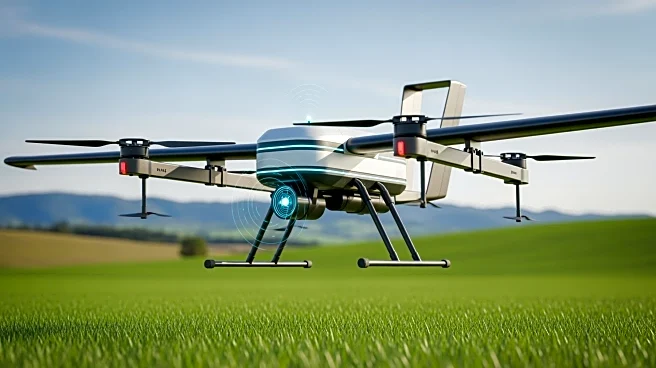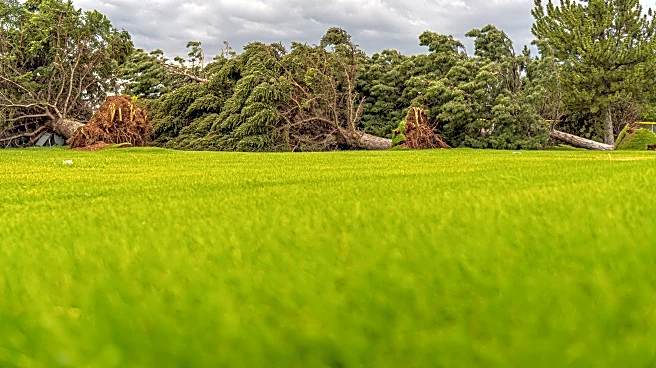What's Happening?
The U.S. agricultural drone market is projected to experience significant growth, with expectations to reach USD 36,546.21 million by 2032, up from USD 2,943.23 million in 2024. This growth is driven by advancements
in drone technology and increased adoption of precision agriculture practices. Key developments include DMR Technologies' investment in a drone manufacturing facility in Louisiana and American Autonomy, Inc.'s launch of a new software platform for agricultural drone operators. Additionally, Hylio plans to expand its production capacity in Texas, and Deere & Company has acquired Sentera LLC to enhance its drone-enabled imaging capabilities.
Why It's Important?
The expansion of the agricultural drone market in the U.S. is crucial for enhancing precision farming, which can lead to increased productivity and reduced resource use. This growth supports the agricultural sector's shift towards data-driven farm management, potentially benefiting farmers through improved crop monitoring and efficient resource allocation. The investments in domestic manufacturing facilities also highlight a trend towards strengthening U.S. technological capabilities and reducing reliance on foreign imports, which could have positive implications for the economy and job creation.
What's Next?
As the market continues to grow, stakeholders can expect further advancements in drone technology and software solutions tailored for agriculture. Companies may focus on expanding their product offerings and improving data analytics capabilities to meet the evolving needs of farmers. Additionally, regulatory developments and government support for precision agriculture could play a role in shaping the market landscape. The increased adoption of drones may also lead to new partnerships and collaborations within the industry.
Beyond the Headlines
The rise of agricultural drones may have broader implications for environmental sustainability, as precision farming techniques can lead to more efficient use of fertilizers and pesticides, reducing environmental impact. Furthermore, the integration of AI and advanced analytics in drone technology could drive innovation in other sectors, such as logistics and environmental monitoring, showcasing the potential for cross-industry benefits.













